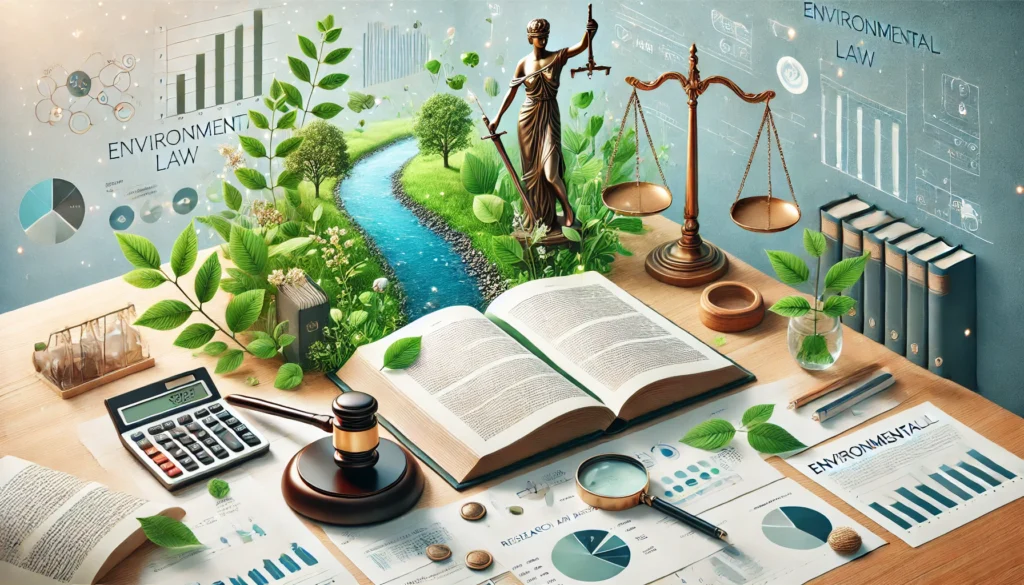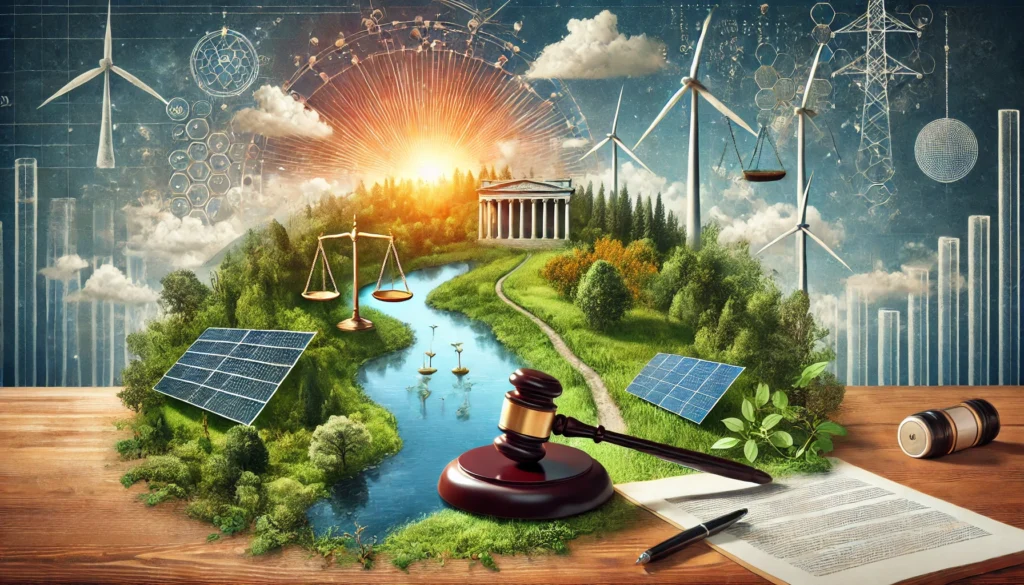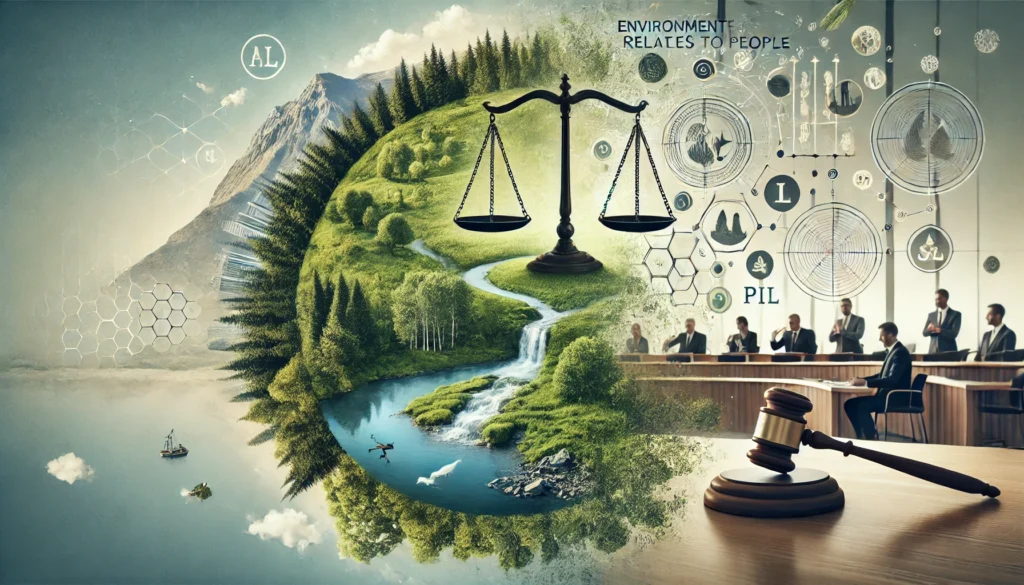Published on 12th June 2025
Authored By: S. Lavanya
Sathyabama Institute of Science and Technology
ABSTRACT
Water is a critical natural resource and an essential component of life. In India, the increasing demand for water resources coupled with unchecked pollution poses a significant threat to both public health and ecological stability. This research paper explores the existing legal framework governing water pollution in India, analyzing key legislations, judicial pronouncements, institutional mechanisms, and the challenges faced in enforcement. The paper concludes with recommendations for strengthening the water pollution control regime in India. Water is one of the most essential natural resources, and its protection is crucial for sustaining life, economic development, and environmental balance. In India, rapid industrialization, urbanization, and population growth have contributed significantly to the problem of water pollution. Rivers, lakes, and groundwater sources are increasingly contaminated with industrial effluents, domestic sewage, and agricultural runoff, posing serious health and ecological risks. Recognizing the gravity of the issue, India has enacted several laws and regulations to control and prevent water pollution. This explores the legislative framework governing water pollution in India. It critically examines the key statutes such as the Water (Prevention and Control of Pollution) Act, 1974, the Environment (Protection) Act, 1986, and related rules and notifications. The role of regulatory authorities, particularly the Central and State Pollution Control Boards, is analyzed in terms of monitoring, enforcement, and compliance mechanisms. Landmark judgments delivered by the Indian judiciary in cases like M.C. Mehta v. Union of India have reinforced the constitutional right to clean water under Article 21, emphasizing the importance of public interest litigation in environmental protection. Despite the existence of robust legal provisions, enforcement remains a major challenge due to weaknesses, lack of public awareness, and political interference. The paper identifies the gaps in current laws and recommends measures such as stricter penalties, improved monitoring technologies, community participation, and inter-agency coordination. This study aims to contribute to the discourse on environmental governance in India by highlighting the legal tools available to tackle water pollution and by suggesting pathways for more effective implementation. Ultimately, ensuring clean and safe water requires not just legislation, but collective responsibility from all stakeholders, including the government, industries, and civil society.
INTRODUCTION
Water pollution in India is a severe and escalating problem. Rapid industrialization, urbanization, agricultural runoff, and inadequate waste management systems have led to the contamination of surface and groundwater sources. The legal system has evolved to address these challenges, but gaps remain in implementation and enforcement. This paper delves into the legal architecture designed to combat water pollution and evaluates its effectiveness. Water is a fundamental necessity for life and a critical resource for economic and ecological stability. In India, where agriculture, industry, and daily human activities heavily rely on water, maintaining its quality is essential for health and sustainability. However, with rapid industrialization, urbanization, and population growth, the country faces a severe water pollution crisis. Major rivers like the Ganga, Yamuna, and Godavari, once considered sacred, are now heavily polluted with industrial effluents, sewage, and plastic waste. The consequences are dire: waterborne diseases, ecological degradation, and loss of biodiversity. To address these challenges, India has developed a legal framework aimed at controlling and preventing water pollution. The cornerstone of this framework is the Water (Prevention and Control of Pollution) Act, 1974, which was the first comprehensive legislation focused specifically on water quality management. It led to the establishment of Central and State Pollution Control Boards, which are tasked with implementing pollution control measures and monitoring compliance. Other key legislations include the Environment (Protection) Act, 1986, which provides broader powers to the central government to address environmental issues, including water pollution.
HISTORICAL EVOLUTION OF WATER LAWS IN INDIA
Water law in India has its roots in ancient customs and religious texts. The Manusmriti and Arthashastra contained rules for the management of water bodies. In the colonial period, legislation such as the Indian Easements Act, 1882, and the Northern India Canal and Drainage Act, 1873, addressed water rights and canal use. However, modern water pollution laws began to emerge post-independence, culminating in comprehensive statutes such as the Water (Prevention and Control of Pollution) Act, 1974.The regulation and management of water in India have a long and layered history, influenced by ancient traditions, colonial governance, and modern legislative developments. The evolution of water laws reflects the country’s transition from customary usage to formal legal frameworks aimed at conservation and pollution control.
- Ancient and Pre-Colonial Period:
- In ancient India, water was regarded as a sacred and communal resource. Texts like the Manusmriti, Arthashastra, and various Dharma Shastras contained provisions related to water rights, irrigation, and penalties for polluting water bodies. The Arthashastra, written by Kautilya (Chanakya), provided detailed rules on construction of canals, protection of water bodies, and punishment for fouling public water sources. Water was considered a shared natural asset, and polluting it was not only a legal offense but also a moral transgression.
- Traditional water harvesting systems like stepwells (baolis), tanks (talaabs), ponds, and canals were managed by local communities under customary practices. There existed a form of decentralized water governance, where panchayats and local rulers oversaw maintenance and use of water resources.
- British Colonial Period:
- The British colonial administration introduced centralized control over natural resources, including water, primarily to support revenue collection, agriculture, and industrial needs.
Key legislations included:
- The Indian Easements Act, 1882 – Recognized private rights over water use as an easementary right, often favoring landowners and industrialists.
- The Irrigation Acts – Various provincial irrigation acts were enacted to control and regulate canal systems and water distribution for agriculture.
- The Indian Forest Act, 1927 – Though not directly related to water, it impacted watershed areas and thus influenced water availability and quality.
- Post-Independence Era (1947–1970s):
- After independence, the Indian Constitution adopted a federal structure, with water falling under the State List (Entry 17, List II of the Seventh Schedule), allowing state governments to legislate on water supply, irrigation, and canals.
- However, inter-state rivers and river valleys came under the Union’s jurisdiction (Entry 56, List I), which led to the need for central coordination in certain matters.
- Initial legislative actions focused more on irrigation and water resource development, with little emphasis on pollution control. However, environmental awareness began to grow globally and domestically during the 1960s and 1970s, leading to calls for regulatory action on water quality.
- The Rise of Environmental Regulation (1970s–1980s)
- A significant turning point came with the enactment of the Water (Prevention and Control of Pollution) Act, 1974. It was the first comprehensive legislation addressing water pollution in India and established the Central and State Pollution Control Boards (CPCB and SPCBs). This act marked the beginning of a modern environmental legal regime in India.
- Following the Stockholm Conference on the Human Environment (1972), India became more active in environmental governance. The 1974 Act aimed to prevent and control water pollution and maintain or restore the wholesomeness of water.
- Another major law, the Environment (Protection) Act, 1986, was enacted in the wake of the Bhopal Gas Tragedy. This umbrella legislation empowered the central government to take necessary measures to protect and improve the environment, including issuing rules and setting standards for water pollution.
CONSTITUTIONAL FRAMEWORK
The Indian Constitution does not explicitly mention water pollution in its original form. However, with the 42nd Amendment in 1976, environmental protection became a constitutional mandate:
- Article 48A: Directs the State to protect and improve the environment.
- Article 51A(g): Imposes a fundamental duty on citizens to protect natural environments including water bodies.
- Article 21: The right to life has been interpreted by the judiciary to include the right to a clean and safe environment, including water.
KEY LEGISLATIONS GOVERNING WATER POLLUTION
- The Water (Prevention and Control of Pollution) Act, 1974:
- This Act is the cornerstone of water pollution control in India. It established the Central Pollution Control Board (CPCB) and State Pollution Control Boards (SPCBs) to monitor and control water pollution.
Key provisions include:
- Section 24: Prohibits the disposal of polluting matter into water bodies.
- Sections 25 and 26: Mandate prior consent from the SPCB before establishing any industry or operation likely to discharge pollutants.
- Penalties: Include imprisonment and fines for non-compliance.
- The Environment (Protection) Act, 1986:
- Passed after the Bhopal Gas Tragedy, this Act provides a framework for the protection of all aspects of the environment, including water.
- Section 3: Empowers the central government to take measures for protecting and improving environmental quality.
- Section 5: Authorizes the issuance of directions including closure, prohibition, or regulation of industries.
- Environmental Standards: The rules framed under this Act provide specific standards for water effluents.
- The Water Cess Act, 1977 (repealed in 2017):
This Act was aimed at promoting water conservation by levying a cess on water consumed by industries. Though repealed, it played a significant role in the early stages of water management policy.
Objective:
- To encourage industries to adopt water-saving and pollution-control technologies.
- Funds collected are used by the Pollution Control Boards.
Amendments: The Act was repealed in 2017 following the introduction of the Goods and Services Tax (GST), with environmental compensation now being levied under polluter pays principle.
- The National Green Tribunal Act, 2010:
- The NGT was established for the expeditious disposal of environmental cases.
- Empowers citizens to approach the tribunal directly.
- Enforces legal rights relating to the environment.
- Can order compensation and restorative justice.
JUDICIAL ACTIVISM AND INTERPRETATION INDIAN COURTS HAVE SIGNIFICANTLY CONTRIBUTED TO THE DEVELOPMENT OF WATER POLLUTION JURISPRUDENCE
- C. Mehta v. Union of India (Ganga Pollution Case): Supreme Court directed the closure and relocation of industries polluting the Ganges.
- Subhash Kumar v. State of Bihar (1991): Recognized the right to clean water as part of Article 21.
- Vellore Citizens Welfare Forum v. Union of India (1996): Introduced principles like “Polluter Pays” and “Precautionary Principle.”
- C. Mehta v. Kamal Nath (1997): Propagated the Public Trust Doctrine.
ROLE OF STATUTORY AUTHORITIES
1.Central Pollution Control Board (CPCB):
- Formulates national policies.
- Coordinates with SPCBs.
- Sets water quality standards.
2.State Pollution Control Boards (SPCBs):
- Implement water quality standards.
- Grant or deny consent to industries.
- Conduct inspections and monitoring.
- Ministry of Environment, Forest and Climate Change (MoEFCC):
- Drafts environmental policies and laws.
- Oversees implementation.
- Coordinates with international bodies and agreements.
CHALLENGES IN IMPLEMENTATION
- Lack of Infrastructure: Many municipalities lack sewage treatment plants.
- Inadequate Monitoring: Absence of real-time data and limited manpower.
- Legal Loopholes: Weak penalties and procedural delays.
- Coordination Gaps: Poor inter-agency coordination.
- Corruption and Bureaucracy: Impede enforcement of laws.
RECENT DEVELOPMENTS AND INITIATIVES
1.Namami Gange Programme (2014):
- Integrated mission for cleaning the Ganga.
- Includes sewage treatment, industrial effluent monitoring, and river surface cleaning.
2.National Water Mission (2010):
- Part of the National Action Plan on Climate Change.
- Focuses on water conservation and efficiency.
- Jal Jeevan Mission (2019):
- Aims to provide piped water supply to every rural household.
4.Swachh Bharat Abhiyan:
- Indirectly contributes by reducing open defecation and improving sanitation.
5.River Rejuvenation Projects:
- State-specific projects to revive polluted rivers.
- Formed in various states under the NGT’s orders to restore polluted river stretches.
COMPARATIVE PERSPECTIVE COUNTRIES LIKE THE USA (CLEAN WATER ACT, 1972) AND THE EU(WATER FRAMEWORK DIRECTIVE, 2000) HAVE ROBUST LEGAL FRAMEWORKS WITH STRINGENT ENFORCEMENT. INDIA CAN LEARN FROM SUCH EXAMPLES BY
- Strengthening compliance mechanisms.
- Encouraging public participation.
- Enhancing inter-agency coordination.
RECOMMENDATIONS FOR REFORM
- Revise Legal Framework: Update the Water Act with stricter penalties and modern standards.
- Institutional Strengthening: Provide better funding and training to CPCB/SPCBs.
- Public Engagement: Promote community-based water management.
- Technology Integration: Use AI and IoT for real-time monitoring.
- Judicial Reforms: Speed up environmental litigation.
CONCLUSION
India’s legal framework for water pollution control is comprehensive but suffers from weak implementation. While the judiciary has played a vital role in filling legislative gaps, sustainable change requires coordinated efforts from all stakeholders. Strengthening the institutional machinery, public participation, and adoption of modern technologies are crucial for ensuring water security and environmental sustainability in the future. However, the biggest challenge lies not in the absence of laws, but in their weak and inconsistent implementation. Despite the existence of multiple regulatory agencies such as the Central and State Pollution Control Boards, enforcement has often been delayed or ineffective due to administrative delays, political interference, lack of technical resources, and limited manpower. Many industries continue to discharge untreated or partially treated waste into rivers and lakes, and urban sewage systems in most cities are inadequate or dysfunctional. As India faces increasing water stress due to population growth, industrialization, and climate change, water security and pollution control must move from being legal formalities to national priorities. Protecting water bodies should not be seen only as a legal responsibility of the government, but as a shared duty involving individuals, industries, civil society, and communities. A multi-pronged strategy is essential. First, institutional capacity must be strengthened- this includes increasing funding, upgrading infrastructure, and ensuring adequate training for environmental regulators. Second, stricter penalties and real-time monitoring systems should be enforced to ensure compliance, especially by industries and municipalities. Third, environmental governance must become more transparent and participatory, with greater public involvement in policy-making and pollution tracking. Technologies such as Al, satellite imaging, and lot should be leveraged for effective surveillance and data collection. Furthermore, public awareness and education campaigns must be enhanced so that citizens understand the value of clean water and actively contribute to its preservation. School curriculums, media, and community initiatives can play a powerful role in shifting attitudes and encouraging environmentally conscious behavior.
REFERENCES
- The Water (Prevention and Control of Pollution) Act, 1974
- The Environment (Protection) Act, 1986
- The Constitution of India
- C. Mehta v. Union of India, AIR 1987 SC 965
- Vellore Citizens Welfare Forum v. Union of India, AIR 1996 SC 2715
- Reports by Central Pollution Control Board (CPCB)
- Ministry of Environment, Forest and Climate Change (MoEFCC) publications.




